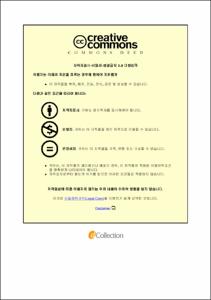조선업 공정별 사고발생형태의 관리자와 근로자 위험인지 차이 분석 연구
- Alternative Title
- A Comparative Analysis of Safety Risks Perception Between Managers and Workers at Each Phase of Shipbuilding Industry
- Abstract
- The Korean shipbuilding Industry has been pouring a lot of effort and energy into reducing accident rates and developing safety management programs and training programs along with investigating the various accidents.
As a result, these have brought a great improvement in reducing overall injury rates. But according to the injury rates released by the Korean Occupational Safety and Health Agency (KOSHA), the data of injury rates shows the steady decline in injury rates has been ceased and these rates have reminded us of the need to study injuries from more various angles.
Many safety programs based on investigating accidents and analyzing root causes have contributed to reduce injury rates but one of cores to accident prevention strategies is the need to identify the differences of safety risk perception between managers and workers since Individual risk perception influences the decision-making process linked to risk taking behavior.
Ship building and ship repair industry is known as a heavy industrial zone. Production phases are variable and complicated. During this study, all production phases were segregated and investigated in detail to understand the process flow and its incidents types.
This study aims to identify which accident types are often occur in reality, which accident types managers and workers place their priority risks at each phase and what perception gaps occur between two groups based on the survey results. First, it was required to recognize common accidents types of each phase from the shipbuilding industry. In order to obtain the actual data of it, the accidents history records from one of the biggest shipbuilding companies in South Korea were analyzed and its accidents types were categorized into each phase. Second, the analytic hierarchy process (AHP) was used for the analysis of the survey to identify the risks perception of two experts groups which are field workers and safety managers versus reality at each phase. The results show that the accidents types trend, which includes risk ranking at each phase were varied and the risk ranking spots were also different. According to the survey result of workers group, Fall (Accident type) was ranked first regardless of phases flow except sub-Assembly phase and Fire/Explosion (Accident type) was ranked second from most phases. That is not closely related to the real accidents trend. The results of the survey showed that risks perceptions from workers group tend not to follow the real accident probability trend of each phase but to depend on the severity of accidents such as Fall and Fire Explosion which could be directly linked with the major accidents. The trend of managers group, on the other hand, followed the real accidents trend. Thus, the high ranked accidents types in the managers group compared well with reality. The above results of surveys have developed into the Risk Assessment Matrix based on risk perceptions versus reality that could play a key role to recognize and understand the differences of risk perceptions at each phase. Furthermore, these results and its analysis aim to make a contribution to develop realistic safety management and training programs which could prevent accidents and avoid or minimize losses.
- Issued Date
- 2019
- Awarded Date
- 2019. 8
- Type
- Dissertation
- Publisher
- 부경대학교
- Alternative Author(s)
- EUN HYE LEE
- Affiliation
- 부경대학교 산업대학원
- Department
- 산업대학원 안전공학과
- Advisor
- 서용윤
- Table Of Contents
- 제 1 장 연구의 필요성 및 목적 1
제 2 장 배경 이론 4
2.1 조선업 특성 4
2.2 조선업 작업 공정 시스템 6
2.2.1 설계단계 (Design Stage) 6
2.2.2 선체공사(Block Stage+Erection Sate) 7
2.2.3 시운전 및 선박 인도 (Testing & Delivery Stage) 16
2.3 조선업 공정별 위험성 17
2.3.1 조립 (Block Assembly) 17
2.3.2 선행의장(Pre-Outfitting) 및 의장 (Outfitting) 20
2.3.3 선행도장(Pre-painting) 및 도장(Painting) 21
2.3.4 선행탑재(Pre-Erection) 및 탑재 (Erection) 22
2.4 조선업 안전관리 연구 24
제 3 장 연구 방법 25
3.1 연구 절차 25
3.1.1 평가 절차 및 내용 25
3.2 연구 방법론 34
3.2.1 AHP의 개요 34
3.2.2 AHP 원리 34
3.2.3 AHP 수행 방법 35
제 4장 연구 결과 39
4.1 조립공정 위험인지 분석 40
4.2 의장공정 위험인지 분석 44
4.3 도장공정 위험인지 분석 47
4.4 탑재공정 위험인지 분석 50
제 5장 토의: 근로자와 근로자의 위험인지 비교 53
5.1 위험인지 차이비교 및 시사점 53
5.2 안전 관리자와 근로자의 위험도 매트리스 55
제 6장 결론 및 고찰 60
- Degree
- Master
- Files in This Item:
-
-
Download
 조선업 공정별 사고발생형태의 관리자와 근로자 위험인지 차이 분석 연구.pdf
기타 데이터 / 2.29 MB / Adobe PDF
조선업 공정별 사고발생형태의 관리자와 근로자 위험인지 차이 분석 연구.pdf
기타 데이터 / 2.29 MB / Adobe PDF
-
Items in Repository are protected by copyright, with all rights reserved, unless otherwise indicated.